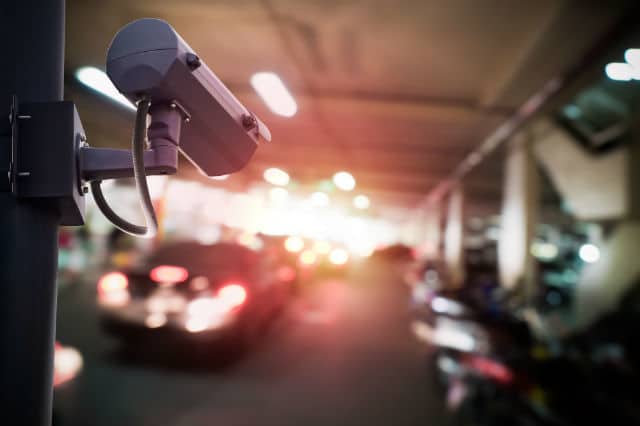This distributed technology is meshing together to create increasingly complex and symbiotic systems. It certainly feels as though we are approaching some kind of zenith point in computing, where the capability and processing power will have become so great, that soon, minimal to no human intervention will be required to attain the effective protection of assets both physical and biological.
The physical security sector, once viewed as somewhat slow to adapt to change, has been harnessing this power in recent times, particularly in CCTV, thanks to the advent of IP surveillance technology.
IoT leading the change in surveillance cameras
It could perhaps be argued that, with the launch of the first IP camera in 1996, Axis Communications also paved the way for IoT devices. The ease with which IP cameras can be integrated into systems and communicate with other network devices has long been a key selling point used by integrators. So much so, in fact, that “a solution that goes beyond security” became practically became the buzz-phrase of the CCTV sector.
The Global Video Surveillance market is expected to grow at a CAGR (compound annual rate of growth) of 15.4% between 2017 and 2022 to reach USD 75.64 Billion by 2022 and the IoT market is predicted to grow a CAGR of 26.9% to reach USD 561.04 Billion by 2022. This hunger for the convenience of smart technology, when set against a backdrop of perceived growing security threats both domestically and abroad, makes wide-scale integration of CCTV with a multitude of other intelligently connected devices look very likely.
Modern IP surveillance cameras offer a wealth of additional functionality, such as deep learning analytics, facial recognition, as well as multi-sensor and multi-directional motion detection, which can be integrated into solutions across building and transport solutions, city infrastructure, defence, industrial, defence and commercial settings, to name but a few.
What do leading CCTV manufacturers think?
We asked two leading IP camera manufacturers where they thought CCTV was heading:
Damien Lee White from Zhejiang Dahua Technology
“CCTV technology has been rapidly evolving, resolutions are increasing, recorders are becoming more powerful, VMS products are becoming more intelligent and we are seeing features included in standard CCTV cameras that would have been considered impossible in the past. We will see new features being added as the cost of the increased processing power decreases. It is now not uncommon to see simple IP cameras performing advanced analytics, such as number plate recognition on moving vehicles.
Zhejiang Dahua Technology is dedicated to shaping the direction that CCTV takes into the future, investing 10% of our annual revenue into R&D. We also have partnerships which foster innovation including the ‘Joint Laboratory of Intelligent Video Systems Engineering’ which is a co-operation with Beijing University of Posts and Telecommunications. Another area of innovation is our unmanned surveillance drones, Off Grid solar powered CCTV solutions, and HDCVI solutions.”
Ryan Fairclough, APAC Sales Director for MOBOTIX AG
“One of the most interesting growth sectors in video surveillance at the moment is data. Purpose-built security solutions are being built using the power of analytics. IP cameras can share useful data with other connected devices, providing end users with far greater situational awareness across multiple locations to better prevent or react to incidents. Equally, data gathered can be used for a number of Business Intelligence activities to improve and streamline processes or increase sales for instance.
In general, people are moving away from low-cost cameras offering little functionality, towards more sophisticated products, which can be integrated into security solutions. In the future, I believe managed edge devices will be the dominant trend, as end users continue to demand smart technology. At MOBOTIX, our cameras have been edge devices since the beginning, thanks to their decentralised architecture. They already contain a number of analytics and intelligent event analysis tools, and our development teams are constantly working to deliver innovative new functionality.”
It looks as though we will see many exciting developments in CCTV technology over the next few years, with it becoming ever more engaged in the world of smart solutions. Solutions which are more effective, economical and automated. Who knows, maybe one day the robots really will take over:

